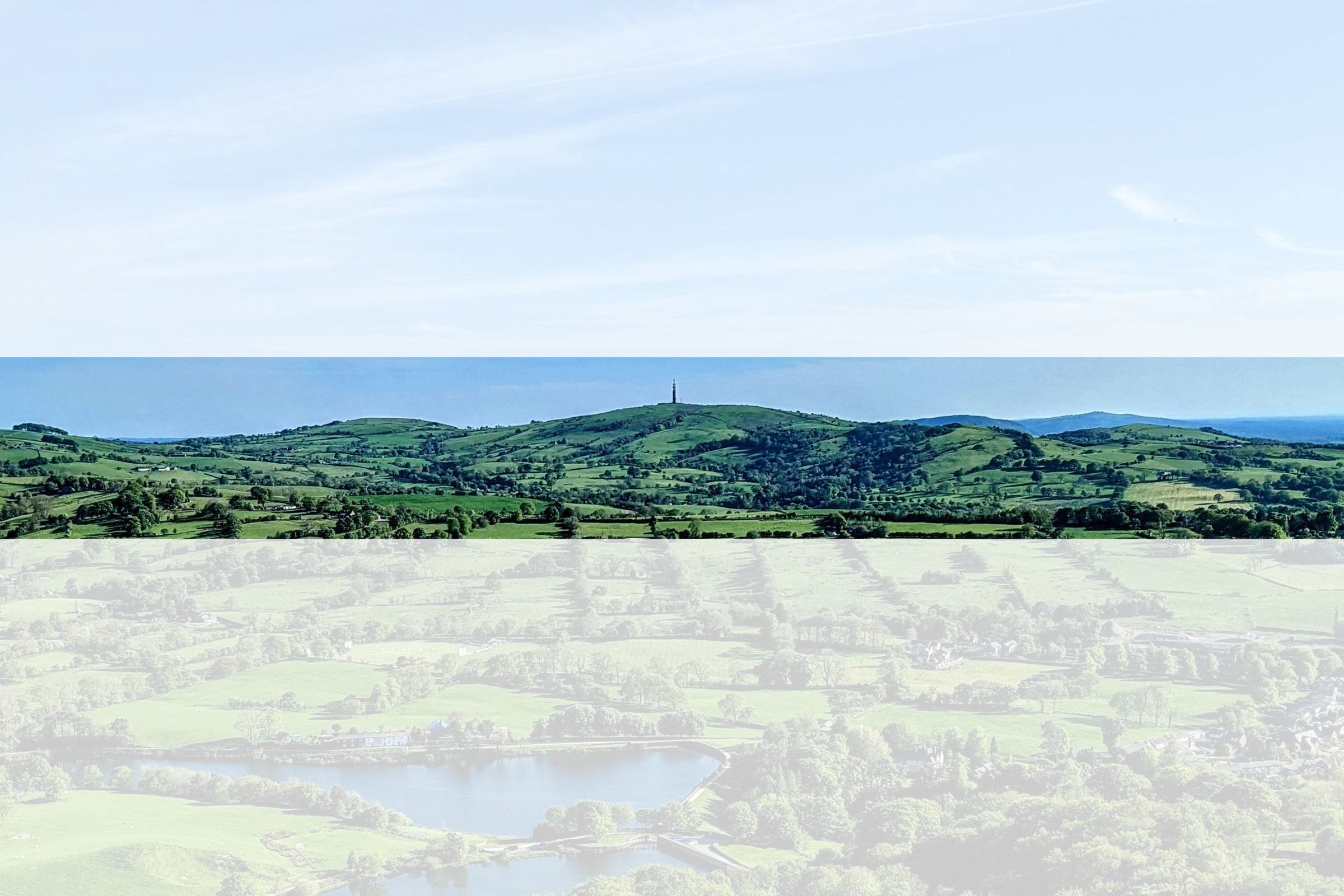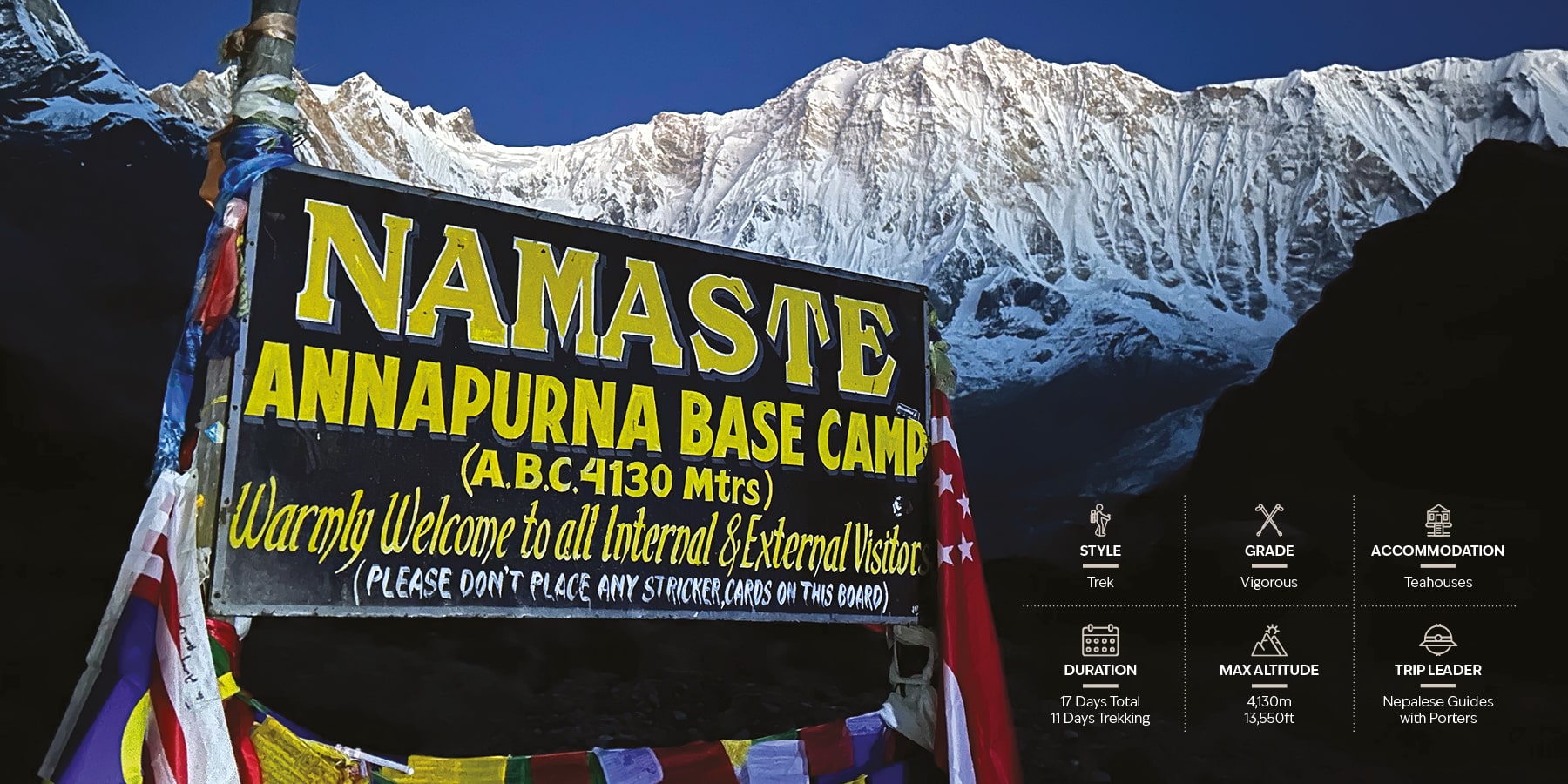A great introduction to high altitude trekking in Nepal. A wonderful walk into the amphitheatre of the Annapurna Sanctuary, surrounded by 11 of Nepal’s major peaks. By David Harrison
Typically, these trips involve 8 to 14 days (occasionally more) trekking in relatively remote landscapes. High passes up to 4,900m/16,000ft may be crossed (sometimes snow-covered) and there may also be glacier travel and peak ascents. Walking days can be between 5 and 8 hours with considerable ascents and descents. Overnight stops on trek could be in tea houses, mountain huts or camping. These trips suit enthusiastic hill/mountain walkers.
To undertake such treks, you should be physically fit and experienced in hill walking. We travelled with Mountain Kingdoms Ltd. who have vast experience of arranging trekking adventures, both as part of a group or as a private party.
As we descended into the sprawling Kathmandu Valley below, the shambolic infrastructure of the capital city reached out before us, tightly squeezed into a narrow corridor between the foothills of the Himalayas.
As we emerged from Tribhuvan International Airport we were met with an assault on our senses. Baggage handlers, taxi drivers, trekking guides and street sellers all vying for attention and yet somehow the chaos seemed to work.
Following a short transfer we soon settled into the lavish gardens of our hotel for the evening, the wonderfully named Yak and Yeti and our team were taken through a trek briefing.
The following day, after a scenic flight to Pokhara, gateway to the Annapurna range, we met our trekking crew made up of our guides Nima and Lama and their team of porters.
A short minibus trip later we arrived at roadhead we were soon walking through tropical forests and open terraced fields. The leaches were trying to hitch a ride, but as long as we remained vigilant, it really wasn’t a problem. We made our way towards our first evenings accommodation Sanctuary Lodge near Birethanti. As far as trekking lodges go, this was a Rolls Royce, a lodge which was hand built by local craftsmen.
After an evening meal of the traditional Dal Bhat and a good night’s sleep, we set out on the 5-to-6-hour trek to the Hilamaya Lodge. It was a long climb up to Ghandruk (also known as Ghandrung) which took us on a stone staircase up through fabulous countryside of cultivated terraces, small settlements and attractive farmhouses. We shared the path with local people and school children while all around farmers were working in the fields with buffalo drawn ploughs. We soon reach Ghandruk which is a busy, prosperous village, well known as it is home for many of the Gurkhas who have served (and continue to serve) in the British Army.
We settled into our lodge for the evening – and as we hadn’t yet gained too much altitude, we enjoyed a Gurkha beer, but closely monitored by our guides!
Day 3 on trek was certainly vigorous with over 8 hours of trekking – through to Sinuwa.
The weather was clear permitting fantastic mountain views, which included Annapurna South, 23,687ft/7,220m, Hiunchuli, 21,132ft/6,441m, Annapurna III, 24,786ft/7,555m, Machhapuchare, 22,943ft/6,993m, and Gandharba Chuli, 20,498ft/6,248m.
We trekked uphill through farmland and forest to Sinuwa Danda, a small settlement on a ridge with 2-3 teahouses. Set in a rainforest, Sinuwa came alive in the evening – certainly an insect heaven.
The following morning, we headed towards Deurali, walking through the forest to the village of Khuldi-ghar where our guides Nima and Lama handed in our trekking permits and conservation tickets at the checkpoint. We descended to the settlement of Bamboo, having reached an altitude of 7,700 feet. The climb was continuous, but our guides set a steady and controlled pace which certainly facilitated our breathing as we gained altitude. We soon reached Deurali at 10,498 feet. That evening in a busy food hall we met fellow trekkers from all parts of the world and there was a heady mix of languages fighting to be heard.
The following day we started walking up towards the Machapuchare Base Camp at 12,000 feet. The lush green vegetation gave way to snow-capped mountains and deep river valleys. You could certainly feel the altitude, but excitement was high as we arrived at the gateway to the Sanctuary. It was a shorter walking day, only 4 hours, so when we arrived, we sat on the terrace drinking ginger tea and absorbing the spectacular vista’s which surrounded us.
We agreed with the guides that we would start the following day at 3am to walk under the stars to the Annapurna Sanctuary, arriving in time to see the spectacular sunrise over the Himalayan mountain range. It was a cold start as down jackets were adorned – and we walked under the clear night sky with head torches showing the way.
Arriving at the Sanctuary – we climbed further up towards the retreating glacier, and we were rewarded with the most spectacular sight of the sun rising over Annapurna South and her awe-inspiring neighbours. Completely surrounded by soaring, snow-capped giants, including Annapurna 1, Tent Peak, Hiunchuli, Gandharba Chuli, and Machhapuchare – we watched as the peaks were washed in liquid gold sunlight. Certainly, a lifetime memory.
The following days we headed down passing through the villages of Dovan, Chomrong, Tadapani and Ghorepani which was our base for climbing to the viewpoint of Poon Hill at 10,532 feet to see another spectacular sunrise.
For the final half day we trekked back to the roadhead where our vehicles were waiting to take is to the Bari hotel in Pokhara. As we sat in the lavish gardens by the pool, reminiscing on the adventure of a lifetime, we reflected on an amazing experience in an amazing country. If you are looking for an adventure – this could be for you!
Note: Altitude Sickness
It is caused by gaining altitude too rapidly, which doesn’t allow the body enough time to adjust to reduced oxygen levels and changes in air pressure. This can cause hypobaric hypoxia (a lack of oxygen reaching the tissues of the body). In severe cases, fluid builds up within the lungs, brain or both and can be extremely serious. It is important to acclimatise and not increase altitude too quickly.



Leave a Reply